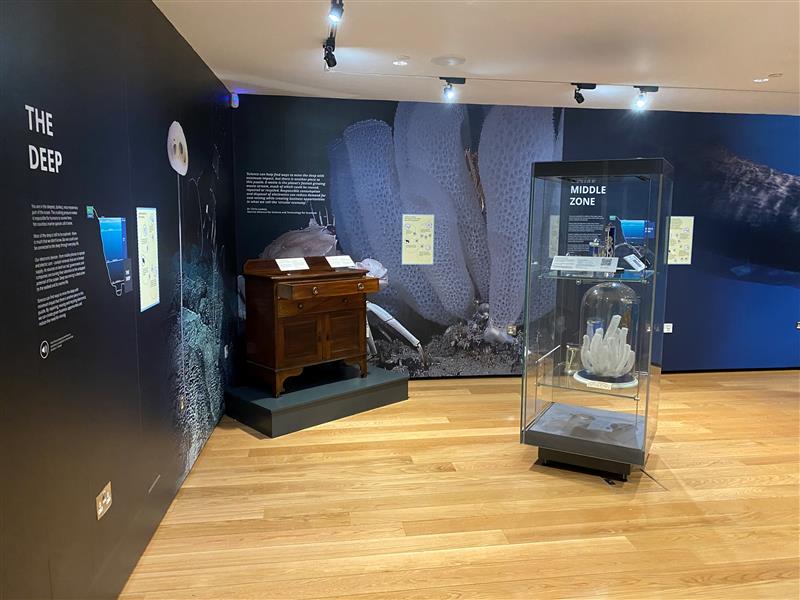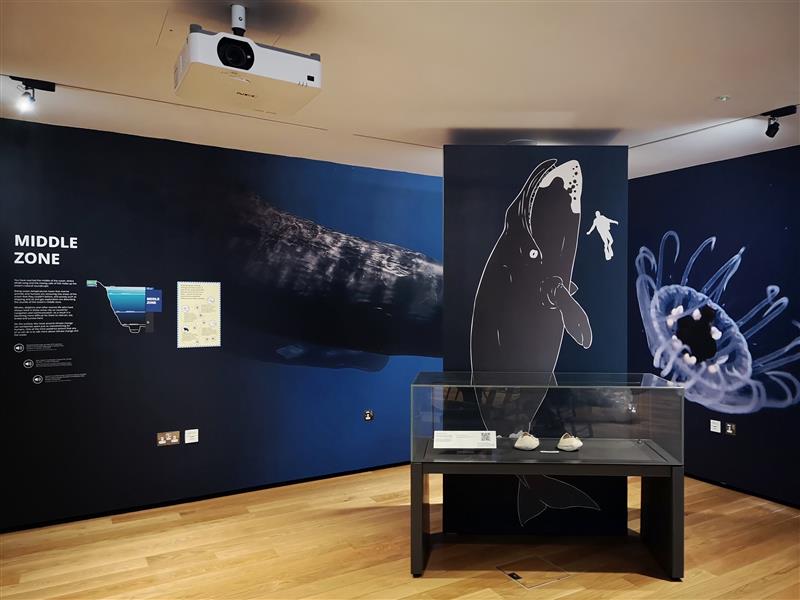
“Dive In! Protecting Our Ocean” at the Wardlaw Museum is an urgent call to action to stir citizen engagement on climate action. We provide audiences with actions that they can take in their daily lives to support environmental sustainability.
But museums need to take action to become more sustainable too.
Exhibitions have large carbon footprints. Museums across the globe stage major blockbuster exhibitions that showcase highlight artefacts on loan from other museums. Loans are packed up (in custom-made wooden crates and non-recyclable materials like bubble wrap) and shipped across counties, countries or entire continents in specialist climate-controlled vans or air freight. On arrival at an exhibition venue, loans are met by a courier from the lending institution who usually travels two round trips to oversee the installation of objects in an exhibition and its journey home.
The production of exhibitions is no less resource intensive. Single-use graphics, display plinths and bespoke acrylic mounts for artefacts are produced for exhibitions, and then disposed of after the exhibition closes.
But Dive In! is an exhibition; so aren’t the Museums of the University of St Andrews just hypocrites, for producing an exhibition that tells everyone else to be sustainable?
For us, it is important to practise what we preach. Sustainability was at the core of our thinking when we developed Dive In! We worked closely with the exhibition designers, Aurelia Cloup and James Poppa, to build sustainability into our design choices and also question and unlearn some of our usual exhibition processes:

‘There is a lot that needs and can be done to address sustainability in Museums, but critically you can’t aim to stir engagement on climate action without questioning the design choices that need to be made to deliver an exhibition like Dive in! There is never one magic green answer to the various parameters involved but I think that honesty and transparency are key to inspire any behaviour change and that recognising potential for improvement is as important as celebrating successes. For Dive in! we’ve questioned every design choice we’ve made through the lens of long-term reusability for future exhibitions and recyclability where single use was the only option.’ Aurelia Cloup, Exhibition Designer
‘By working closely with the client team from the outset, we were able to understand why the exhibition’s material choices and printing methods needed to be considered. Through our work, we believe we have helped create an exhibition that provides thoughtful and engaging interpretation, and where its recyclability or reusability are as important as its accessibility.’ James Poppa, Graphic Designer
Guided by Aurelia and James’ research into sustainable products, we sourced recyclable graphic materials, such as paper wall coverings instead of vinyl (plastic = landfill). We also avoided commissioning any custom-made acrylic display stands for artefacts, which we knew would never be used again. Display furniture has been designed for use in future exhibitions.
To minimise the carbon footprint of Dive In! we selected exhibits from the University’s own collections, rather than relying on loans that needed to be transported long distances. Any artefacts that we have borrowed have been sourced from local museums.
Dive In! has helped us to become more environmentally aware in our museum practice. Looking ahead, our learning from the project will help us develop more sustainable exhibitions in the future.
Claire Robinson, Collections and Exhibitions Curator
Dive In! Protecting Our Ocean is a partnership with the Scottish Oceans Institute and the People Ocean Planet initiative from the Marine Alliance for Science and Technology for Scotland. It has been generously funded by the Calouste Gulbenkian Foundation (UK Branch) and Museums Galleries Scotland.